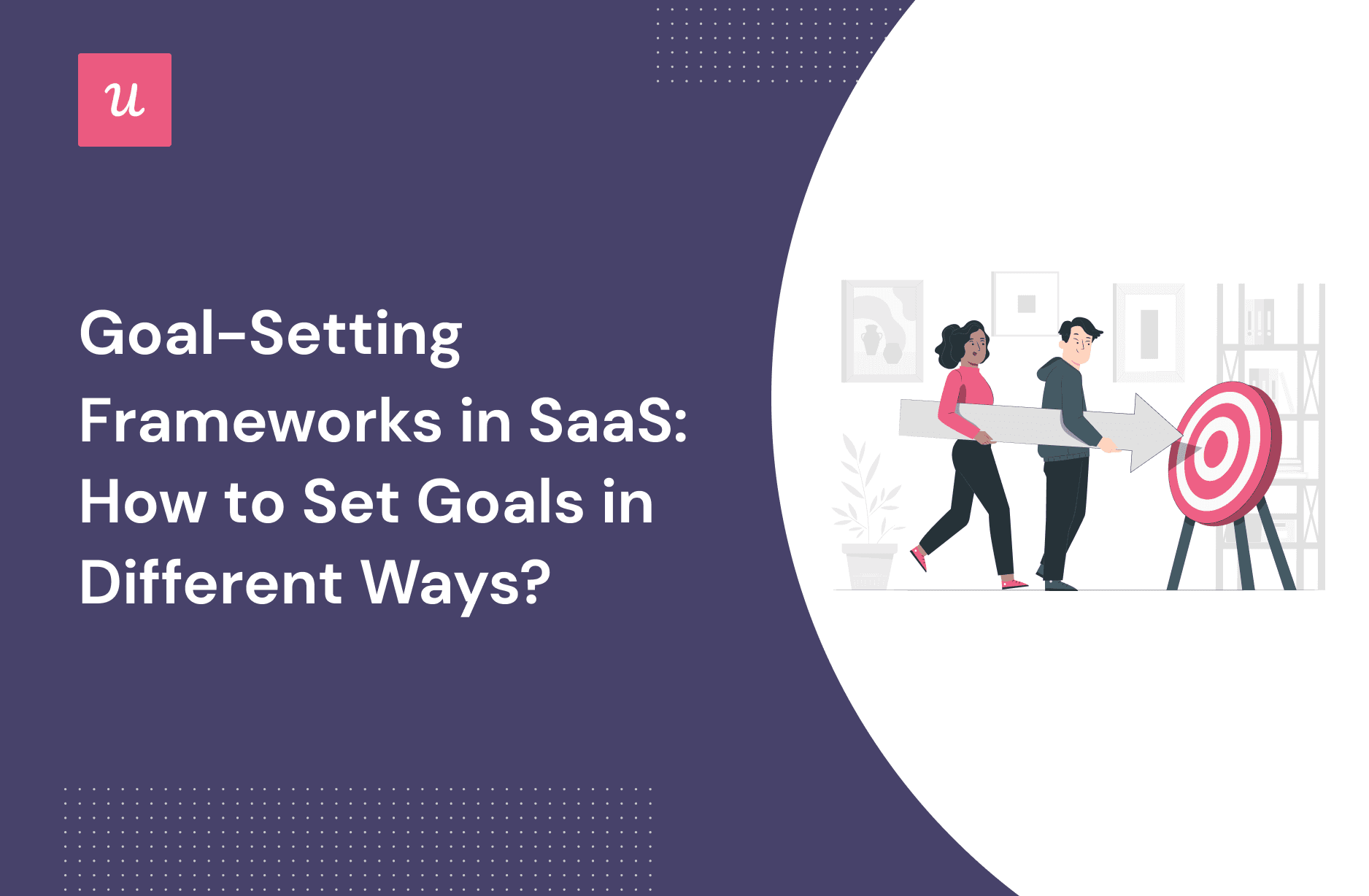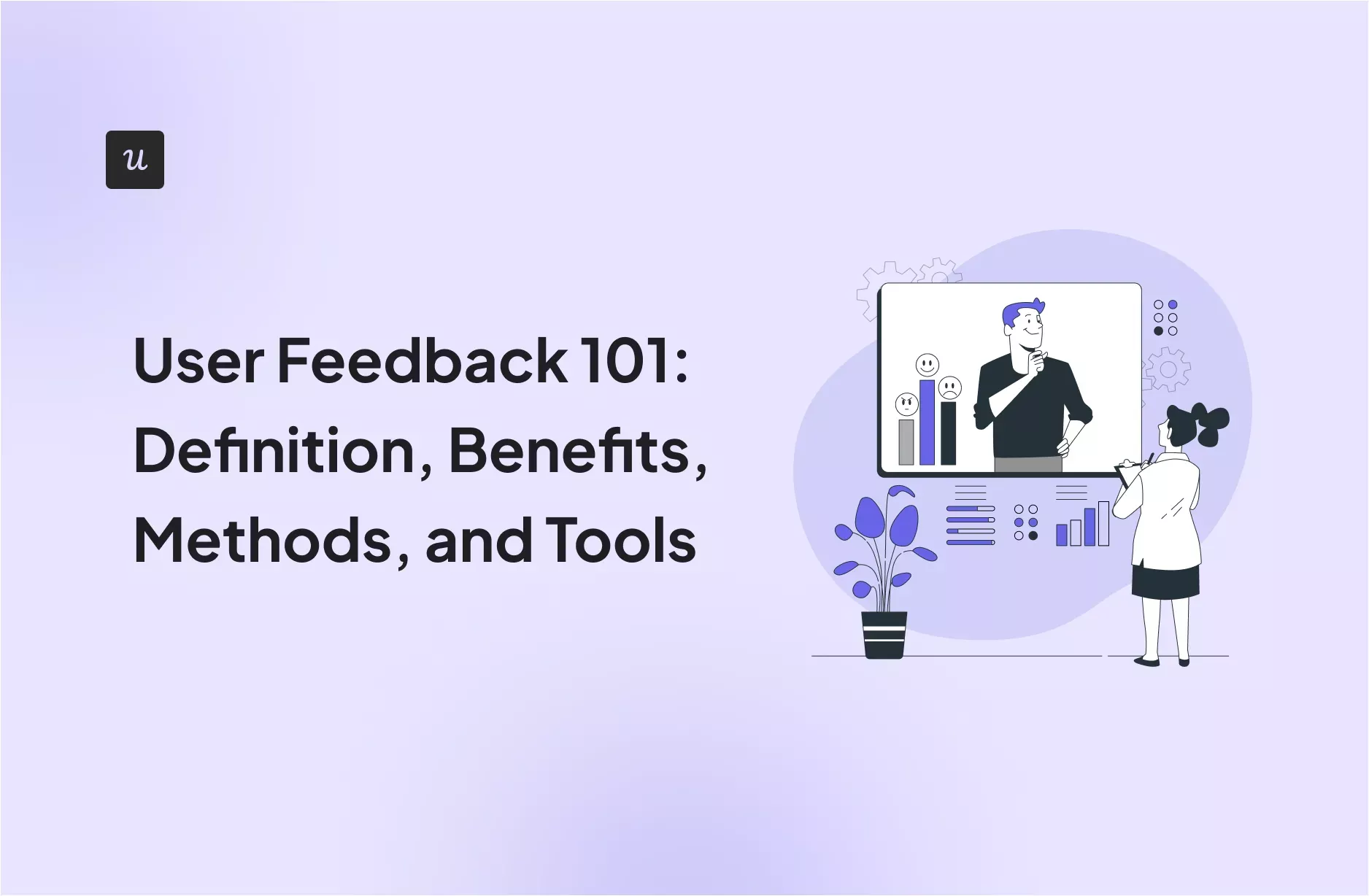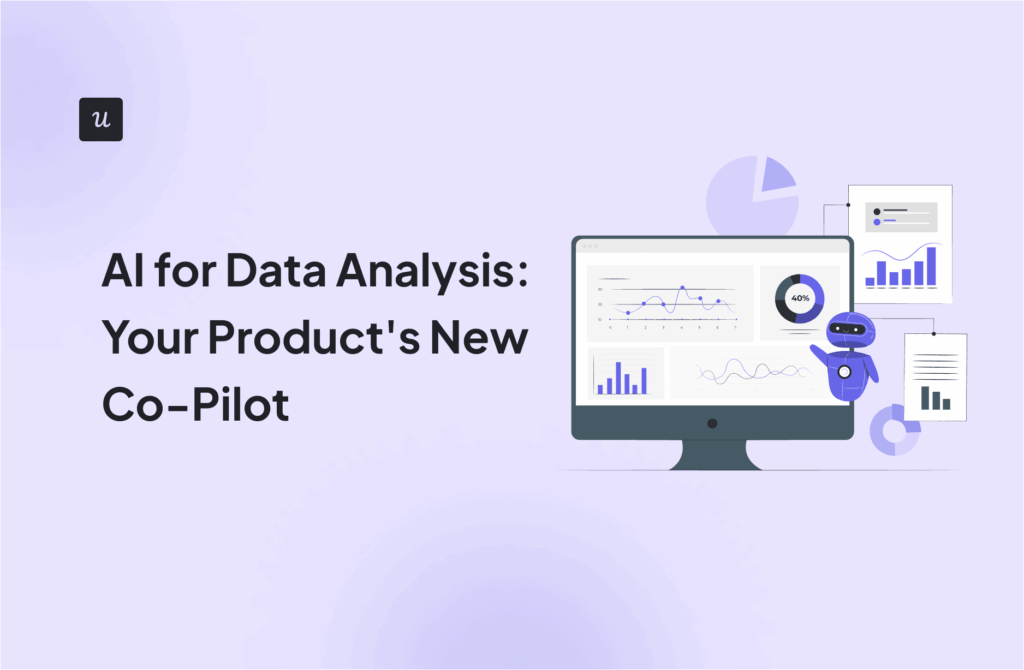
What if you knew that not all goal-setting frameworks are beneficial to your team?
There are a plethora of goal-setting frameworks out there. But choosing a framework is easier said than done. You need to ensure it is the right fit for your team.
Some frameworks will push your team to achieve success, while others will bring it down simply because it’s not compatible with your organization as a whole.
Let’s dive into this article to find the perfect goal-setting framework to grow your product.
Try Userpilot Now
See Why 1,000+ Teams Choose Userpilot

What is a goal-setting framework?
A goal-setting framework is a system that offers structured, step-by-step guides on how to establish goals and attain them.
Such frameworks are usually used to break down more complex goals into simpler tasks. This makes it easier to manage goals and maximize the chance of success.
Why is using a goal-setting framework important?
A goal-setting framework clarifies your team’s objectives to help you devise the right action plan for achieving them.
It offers focus and direction so that each individual and your entire team are aligned with the overall business goals. The members can clearly realize what’s expected of them and thus can compare their performance with the standard.
Moreover, a goal-setting framework helps to improve accountability. Since employees have their individual tasks set out for them, you can track where things went wrong and hold the employee involved responsible.
Because all employees know the exact expectations and can clearly see the path ahead, they feel motivated to complete their tasks. They develop a sense of purpose and can get some self-feedback from the results of their work.
10 goal-setting frameworks to set goals for your SaaS
As previously mentioned, there are multiple goal-setting frameworks out there. To make it easier for you to choose the right fit for your SaaS business, here are 10 effective and popular frameworks.
Let’s have a look at each one and see which one is the right fit for you.
SMART goals
SMART goals are a highly structured goal-setting framework that sets precise goals. Its systematic approach enables you to make productive use of your time and resources as well as focus your strategies in the right place.

The SMART acronym covers 5 criteria, namely:
- Specific (Sensible, Simple, and Significant) – Make sure that your goals are specifically defined. For instance, a goal could be to improve the social media presence of your company. But a specific goal would be to increase the number of followers and level of engagement on Twitter.
- Measurable (Motivating and Meaningful) – Measurable goals allow you to track your progress. For example, your goal could be to boost sales by 20% by the end of December 2022.
- Attainable (Achievable and Agreed) – Your goals should not only be attainable but also agree with the present status of your business. They should fit into your existing schedule. Going back to the previous example, if you want to improve sales by 20% by the end of the year, you must have sufficient time to organize and implement campaigns with the proper resources in hand.
- Relevant (Reliable, Reasonable, and Result-oriented) – Realistic goals are the key to success. You cannot hope to increase your sales by 50% with limited time and resources.
- Time-bound (Time-sensitive and Time-based) – Your goals should come with a deadline to give employees the motivation to work hard for them.
Note that the SMART goals framework is designed to work best for short-term goals. Its rigid model removes the flexibility needed to execute the long-term ones.
SMART goals example
Notice how the following example meets the 5 criteria in the case of lead generation.
- Generate 300 leads by the end of the first month of the email campaign.
- Create an 8-touchpoint email cadence for every user persona this quarter.
- Measure the KPIs for the entire team at the end of every week.
An improved version of SMART goals is SMARTER goals, where E stands for Evaluate and R stands for Readjust. If you measure KPIs weekly, you will be evaluating progress at a regular interval. At the same time, you should have a contingency plan for a rainy day.
Objectives and key results (OKRs)
The Objectives and Key Results framework is used to set and implement goals and measure the key results to monitor progress towards these goals. It is used by large companies, such as Google, Jell (us), and IBM.

OKRs are typically created for quarterly goals. It’s easy to keep adding a lot of key results to the list, but that will only overwhelm your employees. So try to maintain a range of 3-5 key results.
The goals are set for the whole organization, and every individual gets access to them. Then the departments establish their OKRs, where the goals must be aligned with the business objectives.
This approach holds each and every employee accountable for the growth of the business. It also ensures transparency among teams and prevents individual goals from overlapping.
Suppose that your business objective is to increase the number of customers by 1,000. Now the HR department needs to set specific goals, such as training existing employees and/or hiring an X number of people.
OKRs example
Let’s look at an OKR example for customer success.
Objective:
Improve the Net Promoter Score (NPS) of the business.
Key results:
- Collect customer feedback from at least X top-performing customers.
- Get a minimum of Y responses to the NPS survey.
- Exceed NPS score of greater than Z.
B.H.A.G. – Big, Hairy, Audacious Goals
First developed by Jerry Porras and Jim Collins, the Big, Hairy, Audacious Goals framework is used for establishing a massive, long-term goal that would revolutionize the company and maybe even the industry.
Such a goal can be effective in inspiring passion and excitement among employees to achieve something huge. They have a clear purpose and vision to keep them aligned with the overarching goal.
Your B.H.A.G should reflect your company’s core values and vision. It also takes a long time, ideally 10 to 25 years, to bring the big idea to fruition.
One of the creators of B.H.A.G, Jim Collins, said:
“The power of B.H.A.G is that it gets you out of thinking too small. A great B.H.A.G changes the time frame and simultaneously creates a sense of urgency. It’s a real paradox.”
However, B.H.A.G can involve high task complexity since it does not break down the goal into simpler ones. You are left to figure out how to accomplish the goal.
B.H.A.G. – Big, Hairy, Audacious Goals Example
For a B2B SaaS business, a B.H.A.G could be: “Serve 1 million businesses to influence 1 billion lives”. A similar goal had been adopted by the tech consulting company CommGate.
Such an ambitious goal can take you up to 20-25 years to achieve. However, it will ultimately be worth it to live up to your organization’s vision.
Backward Goals
Backward goals are just as the name suggests. You plan the end result at first and then start working backward. This involves breaking down the overarching goal into smaller, supporting goals that are further divided into tasks and targets.
Therefore, this framework gives your team an actionable roadmap to attain the overall goal. It is particularly useful for companies that are not certain about their goal-setting approach.
It might surprise you, but backward planning can motivate people better by making them feel less time pressured. Since there’s less focus on the end result, the ends don’t justify the means. Everyone focuses more on the processes instead, which creates more accountability.
However, this approach can get very time consuming and complex if the original goal is a very ambitious one. So you have to figure out whether your team has the time and resources needed for reverse planning.
Backward Goals Example
Overarching goal: Design the prototype of a new core feature by November 30, 2022.
The following steps show how you can reverse engineer this plan:
- Create the final prototype by November 16.
- Make any necessary changes to the prototype by November 9.
- Create the first draft of the prototype and gather peer feedback by October 30.
- Convert the results into actionable insights and brainstorm potential solutions by October 21.
- Collect customer feedback and peer reviews to improve the validity of your concept and expand your big idea, if needed, by October 14.
- Incorporate the key insights into your concept and find potential solutions by October 7. These solutions can either address a current market need or proactively offer more value to the target audience.
- Conduct both quantitative and qualitative research to come up with a hypothesis for the new feature by October 1.
BSQ—“think big, act small, move quickly”
The BSQ framework consists of 3 components:
- Think Big – This is where you define your ultimate, big goal.
- Act Small – Determine the specific, smaller milestones that will help you achieve your goal. Achieving these milestones will improve the confidence of employees and encourage them to work more efficiently.
- Move Quick – Create a timeline for completing every milestone. A timeline helps to improve the chances of attaining that goal by providing easily visible deadlines.
However, this approach involves fewer guidelines that might have helped you define goals concisely. There is also no focus on the actual activities needed to reach each sub-goal or milestone.
BSQ goals
Think Big: Increase revenue by 20% by the end of next year.
Act Small and Move Quick:
- Launch a product-led growth campaign by January 1.
- Close deals with a minimum of 5 high-value clients by November 1.
- Expand at least 10% of the accounts through upsells and cross-sells by December 15.
Goal pyramid
The main difference between a goal pyramid and other frameworks is that it establishes goals in ascending order according to the level of priority. Your biggest and most critical objective is at the top of the pyramid, followed by large, medium, and small milestones.

What this means is that the structure of the goal pyramid:
- Links your mission-level or broad objectives to the projects required to achieve these goals.
- Connects the projects to the main tasks needed to complete these projects.
- Links these tasks to the actionable sub-tasks necessary to accomplish them.
The goal pyramid is not highly detailed, which makes it better to get a bird’s-eye view of your plan without the actionable roadmap.
Goal pyramids
Referring back to the B.H.A.G example, suppose your primary objective is to ultimately serve 1 million clients.
In that case, your project-level goal could be to close X number of high-performing clients. The short-term tasks can include executing the various aspects of a product-led growth campaign to boost sales and improve the brand reputation.
The subtasks involve the day-to-day activities of your product marketing and customer success team that support your vision. They could include tasks like generating more leads through the most cost-effective acquisition channels.
One Word Goal-Setting
In the one-word goal-setting framework, you only need to select the one word that best describes your objective for the year.
It prevents you from getting overwhelmed by a lot of tasks by removing the complex processes and some tools that are typically required in goal-setting.
You won’t experience analysis paralysis since there are no barriers and pressure created by more complex goals. Furthermore, you stay hyper-focused on what’s the most critical need of your business and teams.
Keep in mind that your one-word goal will not come with key details such as timelines, and milestones. This may make your goal overly simplistic and reduce the chances of success. Plus, you cannot quantify whether your tasks align with the word you selected.
To select the right word for your business, follow these 3 steps:
- Reflect: Think about what you want to achieve for your organization, what you need to meet your vision, what changes or improvements are needed, and whether you have the time and resources to do these.
- Brainstorm: Then brainstorm all the possible words that will help you fulfill your objectives.
- Choose: Finally, choose the word that is the most relatable to your company’s objectives.
One Word Goal-Setting example
Suppose you want to create an efficient customer success team to increase your trial-to-paid conversion rate, improve loyalty and reduce churn.
Here are the possible one-word goals you can have:
- Service
- Loyalty
- Growth
- Dedication
- Retention.
Locke and Latham’s 5 principles
Locke and Latham came up with 5 principles for goal-setting to improve the likelihood of success. This approach usually sets out clear, ambitious goals without being overwhelming.
- Clarity – Ambiguous goals can make it hard for people to understand your expectations. Therefore, goals need to be clear and concise to motivate employees.
- Challenge – When employees achieve challenging goals, it makes the accomplishment even more satisfying and motivates them to keep up the good work. However, make sure that your goals are not too stretched so that they don’t lose interest before even starting.
- Commitment – Goal acceptance doesn’t happen automatically. Some employees may accept a goal simply because it was given by a supervisor, while others may accept it if they can participate in the decision-making process.
- Feedback – Employees need to get timely feedback on their performance from their superiors and even from their peers to know where they should put in more effort.
- Task complexity – If a goal demands complex tasks, it will likely be ineffective. Thus, you should have multiple, bite-sized goals to help employees complete these tasks.

Locke and Latham’s 5 principles example
Let’s explain this model with an example.
- Clarity: Enhance in-app self-service support to reduce the number of support tickets and improve overall customer service.
- Challenge: Highlight the impact of the goal on the whole company and provide comprehensive training to the support team.
- Commitment: Solicit fresh ideas from team members and give them adequate resources and deadlines.
- Feedback: Provide regular performance reviews.
- Task complexity: Create simple sub-goals for complex tasks.
Tiered Goals Framework
A tiered goals framework depends on the time frame to achieve them. The goals are divided into monthly, quarterly, and annual goals. There is also an evaluation period to recommit, reset, and remove goals, as necessary.
Your annual goals should be challenging yet achievable. You can set a maximum of 4 goals. Then divide your annual goal into smaller ones and spread them out over the 4 quarters. Review goals at the end of one quarter before fixing goals for the next one. Monthly goals are the most action-oriented and appear like a to-do list.
Tiered Goals Framework example
Annual goal: Increase the subscriber base by 20%.
Quarterly goals:
- Create remarkable social media content.
- Improve the in-app experiences.
Monthly goals:
- Hold meetings to discuss the types of content.
- Ideate new onboarding strategies.
Golden Circle
The golden circle framework follows a specific order that helps to prioritize business objectives and align teams with the same vision and mission. The model comprises 3 circles, where you should start from the innermost one:
- Why – the purpose of the goal
- How – the processes needed to attain the goal
- What – the services that you provide to achieve the goal and the end result.

Golden circle example
- What – Reduce churn by 20%.
- How – Use churn surveys and improve onboarding.
- What – Address all the issues users mention in the survey and use tooltips to highlight features that users might be missing out on.
How to set goals and track them with Userpilot?
Here’s how you can set goals and monitor them with Userpilot. The good news is that it’s completely code-free and can be set up in a few minutes.
Alongside its powerful web features for goal tracking and user engagement, Userpilot now also helps you to onboard and engage mobile app users by creating personalized messaging, push notifications, and surveys.
Let’s see how!
Create goals and assign them to specific segments
Userpilot allows you to create custom goals and pre-define the paths the customers need to go through.
Our advanced segmentation tool lets users separate into groups based on their user persona, behavior, or use cases. You can then assign the goals to specific segments.

Track when and how users complete goals
Userpilot lets you track what customers are doing in-app and what percentage of the users have completed a particular goal. Thus you will see how customers are interacting with the goals and find friction points that they might be facing.
The image below shows the defined goals along with their rates of completion.

Wrapping it up
Now that you know more about the top 10 goal-setting frameworks, analyze their pros and cons in relation to the type and objectives of your business.
Don’t choose a framework based on its popularity in your industry. What works for your competitors might not work for you, so choose wisely.
Want to segment your customers and create custom goals for them to track their progress and collect insights? Book a Userpilot demo with our team and get started!







